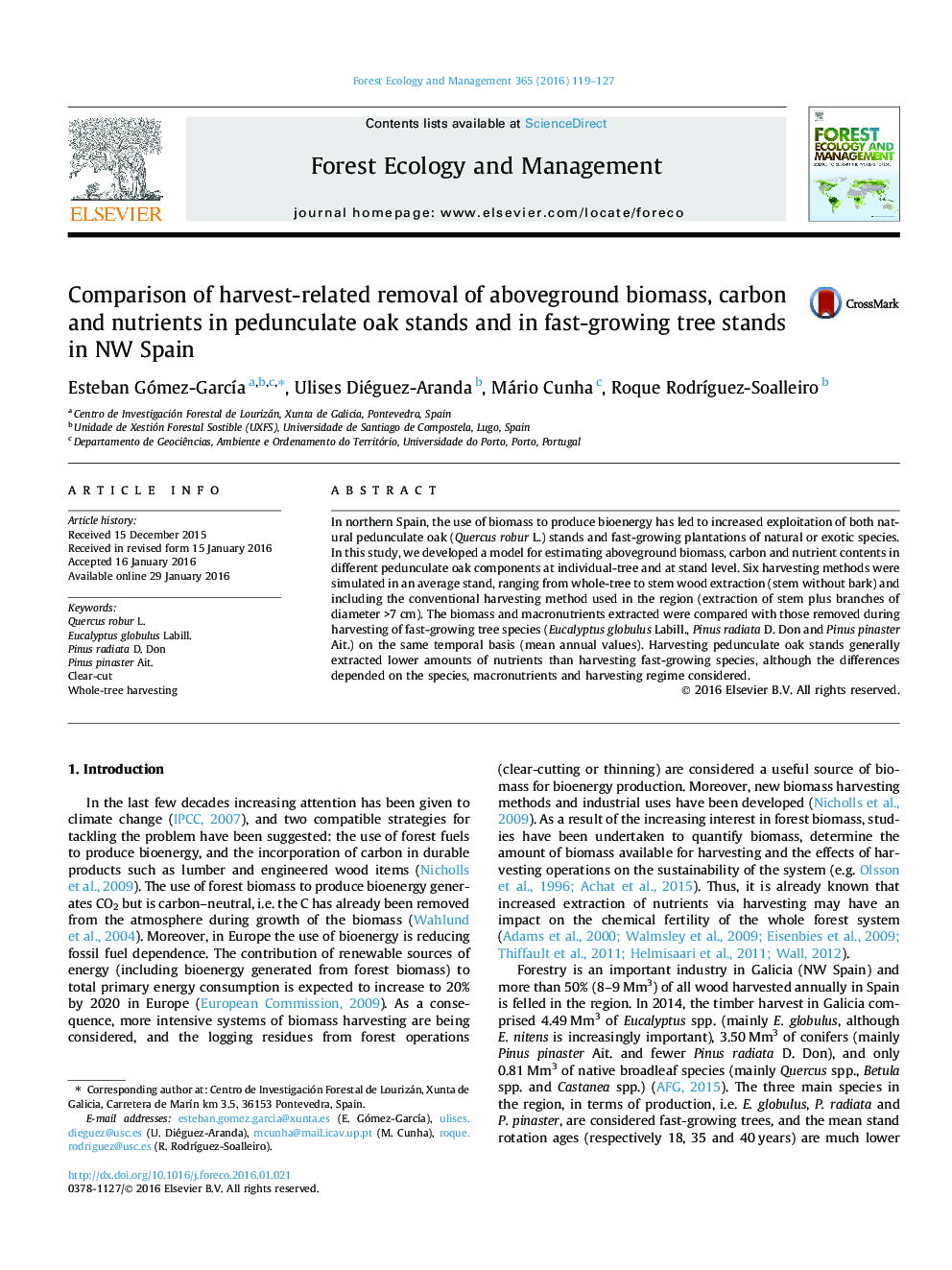| Article ID | Journal | Published Year | Pages | File Type |
|---|---|---|---|---|
| 6542355 | Forest Ecology and Management | 2016 | 9 Pages |
Abstract
In northern Spain, the use of biomass to produce bioenergy has led to increased exploitation of both natural pedunculate oak (Quercus robur L.) stands and fast-growing plantations of natural or exotic species. In this study, we developed a model for estimating aboveground biomass, carbon and nutrient contents in different pedunculate oak components at individual-tree and at stand level. Six harvesting methods were simulated in an average stand, ranging from whole-tree to stem wood extraction (stem without bark) and including the conventional harvesting method used in the region (extraction of stem plus branches of diameter >7Â cm). The biomass and macronutrients extracted were compared with those removed during harvesting of fast-growing tree species (Eucalyptus globulus Labill., Pinus radiata D. Don and Pinus pinaster Ait.) on the same temporal basis (mean annual values). Harvesting pedunculate oak stands generally extracted lower amounts of nutrients than harvesting fast-growing species, although the differences depended on the species, macronutrients and harvesting regime considered.
Related Topics
Life Sciences
Agricultural and Biological Sciences
Ecology, Evolution, Behavior and Systematics
Authors
Esteban Gómez-GarcÃa, Ulises Diéguez-Aranda, Mário Cunha, Roque RodrÃguez-Soalleiro,
